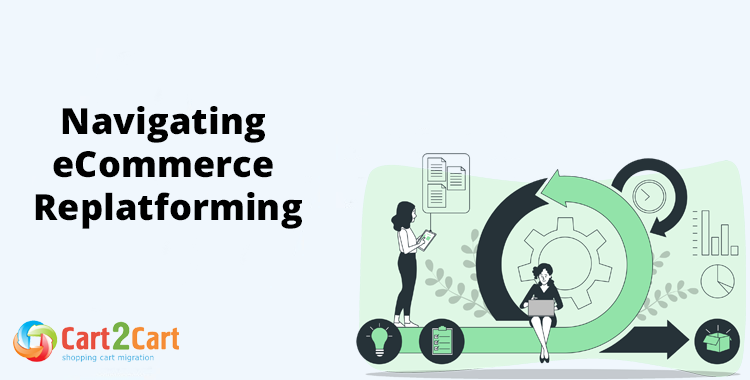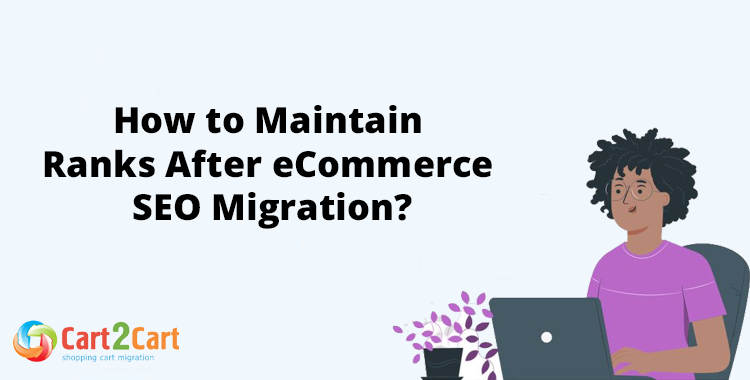Adobe Business Catalyst Migration
Looking for a seamless Adobe Business Catalyst Migration? Cart2Cart offers a fully automated, secure, and fast solution to migrate from Adobe Business Catalyst with guaranteed zero downtime for your current store. Our expert system meticulously transfers all your critical data – products, customers, orders, SEO URLs, and more – typically completing the entire process in just a few hours. Trust Cart2Cart's proven migration technology to move your business to a new platform safely and efficiently, ensuring a smooth transition with no disruption to your sales or customer experience.
How to Migrate to Adobe Business Catalyst
This step-by-step guide details how to securely migrate to Adobe Business Catalyst from any other e-commerce platform using Cart2Cart, ensuring a smooth transfer and complete data integrity for your storefront.
- Register and Initiate: Create a Cart2Cart account to begin your platform switch. This initial step is free and takes only a minute.
- Connect Your Source Store: Provide the credentials for your current platform to allow secure API access for the data transfer.
- Connect Adobe Business Catalyst Target Store: Prepare a CSV file with your data according to Adobe Business Catalyst's import specifications. Upload this file to the migration wizard to set up your target store.
- Select Data and Options: Choose which data entities to move, including products, SKUs, and customer orders. Configure crucial options like 301 redirects to preserve your SEO rankings.
- Run a Free Demo Migration: Launch a free test transfer to move a limited set of your data. This allows you to check the results directly in your new Adobe Business Catalyst store before the full replatforming.
- Launch the Full Migration: Once satisfied with the demo, start the full migration. The process runs on our servers, ensuring no downtime for your business.
Pro-Tip: Since this is a target-only migration via CSV file import, ensure your file is formatted correctly to match Adobe Business Catalyst's requirements for a successful import. No additional plugins are needed for this process.
Automated migration
Just set up the migration and choose the entities to move – the service will do the rest.
Try It Free
Data Migration Service Package
Delegate the job to the highly-skilled migration experts and get the job done.
Choose Package
What data can be migrated from/to Adobe Business Catalyst
-
Products
-
Product Categories
-
Manufacturers
-
Customers
-
Orders
Choose all the extra migration options and get 40% off their total Price
We’re committed to protecting our customers’ data security. Check out our Security Policy
The Cart2Cart service has all the necessary functionality to migrate store databases on Adobe Business Catalyst of any size and complexity. Below are the most popular migration directions among our customers:
Help Center
Let’s figure out everything about Adobe Business Catalyst migration through
Cart2Cart.
Discover our checklist, related articles, and answers on frequently asked questions.

 June 7, 2023
June 7, 2023 The Ultimate Guide to eCommerce Migration: How-To Directions and Best Practices
Read full articlePay only for what you migrate - the cost depends on the number of records to be moved
Estimate Your Adobe Business Catalyst Migration Cost
Use our tool below to get a transparent Adobe Business Catalyst migration cost tailored to your specific needs. This instant estimate provides clear Adobe Business Catalyst migration pricing with no hidden fees, empowering you to confidently plan your move and understand your Adobe Business Catalyst migration price upfront.
Adobe Business Catalyst Monthly Pulse: An Analysis of a Concluded Era
This month's analysis deviates from our standard forward-looking pulse to provide a strategic post-mortem on Adobe Business Catalyst (BC). With the platform's official End-of-Life (EOL) having passed, the market has now fully absorbed the transition. Our focus, therefore, is on the platform's lasting legacy, the impact of its sunset on the small-to-medium business (SMB) e-commerce landscape, and the strategic lessons for decision-makers evaluating today's all-in-one solutions.
A Concluded Chapter in the SMB Market
In its prime, Adobe Business Catalyst carved out a niche by offering an integrated solution encompassing CMS, CRM, email marketing, and e-commerce, primarily targeting digital agencies and their SMB clients. However, its market share had been in a steady decline for years, and post-EOL, its active market share is now effectively zero. This dissolution represents a significant, albeit forced, migration event. The key takeaway is not the loss of a competitor, but the market's decisive shift away from closed, all-in-one systems toward more flexible, API-driven platforms that allow merchants to build a best-of-breed technology stack.
Final Infrastructure Sunset and Performance Implications
The most critical "update" of the platform's final phase was the complete shutdown of its hosting infrastructure. This was not a degradation of service but a total cessation of operations. For any businesses that failed to migrate, this meant their digital presence vanished overnight. This event serves as a stark reminder of the inherent risks tied to proprietary, single-vendor platforms. For business leaders, it underscores the critical importance of evaluating a platform provider's long-term roadmap and financial commitment to the product, as infrastructure stability is the absolute foundation of digital commerce.
The Dissolution of a Closed Developer Ecosystem
Business Catalyst operated on a proprietary codebase with a limited set of APIs, which ultimately constrained innovation and customization. As part of the EOL, this entire ecosystem was deprecated. This stands in stark contrast to the thriving app marketplaces of Shopify, BigCommerce, and the vast open-source community surrounding Adobe Commerce (Magento). The lesson here is that the true value of a platform is increasingly measured by the strength and dynamism of its developer and partner ecosystem. A platform without a robust community is a platform without a future.
A Legacy of Integrated Tooling
While we cannot report on a new feature, we can analyze the platform's core value proposition: its integrated toolset. For a time, having a single login for a website, customer database, and email campaigns was a compelling advantage. However, this "jack-of-all-trades, master-of-none" approach became its primary weakness. Specialized providers for CRM (like HubSpot) or email (like Klaviyo) delivered far superior functionality. The strategic insight is that deep integration with best-in-class services has proven to be a more powerful and scalable model than a shallow, all-in-one feature set.
The End of the Security Watch
With the platform's termination, all security monitoring and patching ceased. This is perhaps the most significant consequence of the EOL. Any lingering sites became immediate and escalating security liabilities, non-compliant with PCI DSS and vulnerable to data breaches. For enterprise and high-volume merchants, this highlights that platform selection is fundamentally a decision about trust and risk management. Ongoing, proactive security investment from a platform provider is not a feature; it is a non-negotiable requirement for modern commerce.
A Footprint Fades from the Global Map
Business Catalyst had a modest international presence, but it lacked the sophisticated multi-store, multi-currency, and cross-border fulfillment capabilities of today's leading platforms. Its shutdown effectively removed it from the global commerce map entirely. This event accelerated the adoption of platforms built from the ground up for internationalization, forcing former BC clients to re-evaluate their global strategy and invest in technology that could truly support their ambitions for worldwide growth.
The Great Migration: A Case Study in Re-Platforming
Instead of a brand migrating *to* the platform, the story of Business Catalyst is now defined by the thousands of SMBs that migrated *away* from it. This forced re-platforming event provided a clear snapshot of the current market hierarchy. We observed former BC users segmenting primarily into three camps: those seeking simplicity and a powerful app store migrated to Shopify; agencies valuing open-source flexibility for their clients often chose WooCommerce; and the few larger, more ambitious businesses on BC saw an opportunity to graduate to the enterprise-grade power of Adobe Commerce, staying within the Adobe ecosystem but embracing a far more robust and scalable solution.
Source: This analysis is synthesized from Adobe's official End-of-Life communications and a retrospective market analysis of the SMB e-commerce sector.
Just set up the migration and choose the entities to move – the service will do the rest.
Try It FreeDelegate the job to the highly-skilled migration experts and get the job done.
Choose Package















